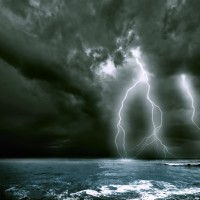When Disaster Strikes


Nobody is ever truly prepared for when a natural disaster strikes. Though it is becoming easier to measure possibility of occurrence, there remains some level of arbitrariness with natural disasters: the exact time, the locations most likely to be hit/affected; the magnitude and the scope of the expected damage. All of those remain unpredictable even when precautionary measures have been taken. In the immediate aftermath of any natural disaster, immediate medical and material (food and clothing) relief flood in. Everyone becomes concerned and does his or her best to help. However, for the victims of such disasters, recovery is often a long, tedious and painful process. Many are often unable to pull what was left of their lives back together.

Tuesday, January 12, 2010. Near the town of Leogane, 25 kilometers west of Port-au-Prince, a 7.0 magnitude earthquake struck the Island of Hispaniola, affecting the country, Haiti most severely. Eight (8) aftershocks were recorded in a two hour period after the major quake. An estimated three million (3,000 000) people affected by the devastation; one hundred and sixty thousand (160, 000)reported as dead. Two hundred and fifty thousand (250,000) residences and thirty thousand (30,000) commercial buildings collapsed. The dislocation was unimaginable. The international community responded quickly with humanitarian aid; a plethora of pledge marathons, benefit concerts and donation drives were underway. The prospects looked great for Haiti and the victims who suffered from this crippling disaster. But the disaster did not just result in infrastructural damage and dislocation of people and loss of lives. With the disaster came a public health crisis – an outbreak of cholera because of lack of safe drinking water and basic sanitary conditions.
April 15, 2015; a 7.8 earthquake hit Nepal, killing more than nine thousand (9,000) persons and injuring more than twenty three thousand (23,000) and more than four hundred and fifty thousand (450,000) people were displaced. On May 12, less than one month later, an aftershock measuring 7.3 magnitude hit the country again. At least 153 people were killed by the aftershock and more than 3,200 people were injured. Most of the people affected this time were those living in the open air after the first earthquake had dispossessed them. Again, another public health situation is created with lack of safe drinking water and sanitation facilities.

Nepal is still far ways from recovery. Efforts are still afoot by the international medical corps to prevent the outbreak of diseases germane to the wake of disasters like these. Today, five years after the devastating earthquake in Haiti, people are still suffering the psychological impact of losing everything, including loved ones. Thousands are still trying to eke out a life for themselves and their families; approximately eighty thousand people are still without a proper roof over their heads; thousand still live in camps, where there is no water safe for drinking or sanitation facilities for them to use. And, most of the humanitarian aid has stopped coming in. Volunteers have returned to their lives and countries and the victims have been left to scrape up their lives with just ‘a hope’ as their only resource.
